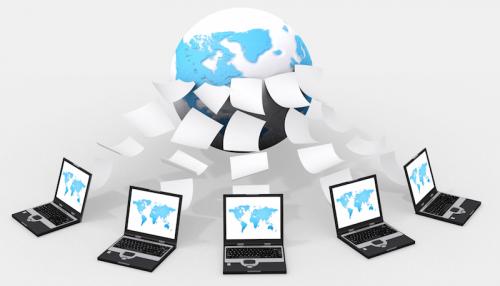5 Ways to Improve Your Webcast

Webcasting is an extremely useful way to build customer relations, share educational materials, launch new products, brainstorm with peers, and communicate with your target audience. Unfortunately, many webcasts ultimately fail because of audio visual interruptions, log-in errors, lack of engagement, and poor management.
This list of ways to improve your webcast is based on our years of experience doing live webcasting and dealing with these very issues. Through working with numerous clients on nationwide events, we’ve come to understand what works and what doesn’t. Before you plan your next webcast event, we recommend taking the following steps:
1. Plan Early and Leave Nothing to Chance
The first step in avoiding webcast failures is making the proper preparations. In order to build awareness you’ll need to take promotional steps like making an event website, sending invites and registration emails, and executing a targeted marketing campaign.
You’ll also want to do site surveys at remote locations to test internet stability and know the limitations of each space.
Consider the lighting and color contrast in each room. Early on the day of the webcast, make sure to perform tests to verify everything is working and that you’ll be able to start on schedule.
2. Hire Technicians to Ensure Flawless Execution
When it comes time to broadcast, you should have trained technicians on-site to operate recording equipment and provide technical support. If something does go wrong, they can work on fixing the issue so the speaker or moderator doesn’t have to step away from their duties.
About 20 minutes before the event, put up welcome slides that let viewers know they are at the correct site and answer common questions like, “how to submit questions” or “how to obtain content after the session.” You should always respect the attendees’ time by starting and ending on schedule.
3. Keep Things Moving to Maximize Engagement
Holding the audience’s attention can be much easier said than done when you’ve got a ton of information to cover and a large agenda to keep to. For starters, attendees will be more engaged if you send them documentation in advance and allow them to submit questions ahead of time. They will listen for the responses to their questions and be invested from the start.
Another important step is to change up those boring presentation slides to include engaging photos, videos, and audio clips. Offering synchronized slides with the video feed and switching between video feeds from different locations will also keep things interesting.
Speakers should be coached not to simply read slides or stare at the screen, and presentations shouldn’t run more than 15 min without some sort of interactive component.
4. Optimize Interactivity & Utilize Gamification
The convenience of viewing webcasts from the comfort of home can also be a danger when distractions like cell phones, TV, and email are taken into account. Even more so than at in-person events, webcast attendees must be engaged on their second screens to bypass these distractions.
Add Facebook, Twitter and Linkedin integration, create a hashtag and ask people to tweet their questions and comments during the broadcast. You can incentivize by awarding prizes for participation. Those who tweet the event hashtag can be entered into a drawing or you can pick the most creative posts to award with gift certificates or event swag.
Incorporating live Q&A and brainstorming sessions are other great ways to turn a presentation into an interactive conversation. You can host live polls to gauge interest and use the results to focus additional content. Those who respond to every poll can be put into a drawing to win prizes at the end or after the event.
5. Follow Up with the Details
When the broadcast has ended, conversation and buzz about the event should still be building. There is important data to analyze and post-event communication to be managed. First, it is incredibly important to make use of post-event surveys in order to gather feedback about your webcast. The results will allow you to see what parts of your event were successful and what parts could use work in the future.
Utilize registration data and lead captures to distinguish what attendees did not participate and develop a strategy to engage them next time around. Use the email addresses you’ve gathered to follow up post-event with special downloads for participants, meeting notes, and the OnDemand link to watch again. Also consider cleaning up and using parts of the web recording for shorter, micro-viral videos that you can use for promotion on your website and YouTube.
Looking for webcasting services in Chennai and streaming services, than Webstream world is the best company for you
Advertise on APSense
This advertising space is available.
Post Your Ad Here
Post Your Ad Here
Comments